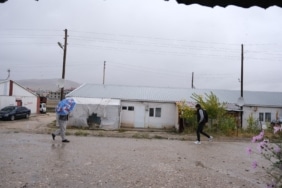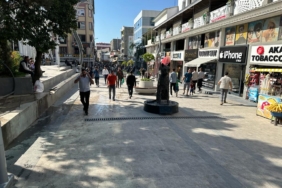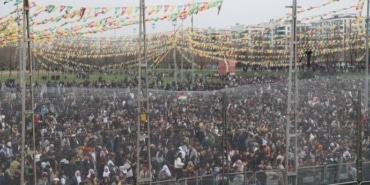Algae has been observed on the Erciş shores of Lake Van, which is the largest lake in Turkey. Yuzuncu Yıl University (YYU) Faculty of Fisheries Faculty Member Dr. Mustafa Akkuş said that the situation was caused by the excess of nutrient salts in the lake.
While the decreasing precipitation and increasing evaporation in Van and its surroundings in recent years have reduced the water level in Van Lake, the algae density that has started to be seen recently in the 1 kilometer section of the Sahilkent District of Erciş district has caused uneasiness. Those who came to the beach stated that they could not understand the thick green layer. Necdet Sara (61), who has been operating a pedalo for 7 years in Sahilkent Neighborhood, and father of 2 children, said that the situation in the lake made him nervous and that his customers gave up on taking a stroll in the lake.
‘It should prevent food salts’
Van YYU Faculty of Fisheries Faculty Member Dr. Mustafa Akkuş said that the situation was caused by the excess of nutrient salts in the lake. Akkuş noted that there is algae growth with the increase in temperature, especially in regions where the water depth is low, but that there is no serious danger. Drawing attention to the pollution and explaining that this is a sign of the change in the lake, Akkuş said, “Because Lake Van is at a high altitude, the biological cycle is slow, that is, the dissolution of the pollution coming into the lake is slower than in regions with lower altitudes. When we walk around the edge of Lake Van today, we see that algae have grown excessively in Mollakasim and Erciş, that is, algae increase and cover the surface on the shores. In fact, this is due to the excess of nutrient salts in the lake. When the food salts are high, it finds the suitable environment with the temperature and starts to multiply. Currently, there is no serious danger for Lake Van because the amount we see here covers a very small area than what is considered normal. This is actually a sign of a change, namely Lake Van is a closed lake. Pollution from the lake has no chance to get out. For this reason, all treatments on the edge of Lake Van should work at full capacity, and not a single drop of pollution should enter the lake.”
‘We can see it in much wider areas’
“Finally, if the treatments do not work at full capacity, we can see these algae blooms and algae increases in much larger areas, which we see today in partially small areas.” Saying Akkus drew attention to the following: “As nitrogen and phosphorus input from rivers or other sources increases, algae in the lake automatically increases. Therefore, the treatment plants should operate at full capacity and prevent the nutrient salts entering the lake.” Emphasizing that the greening of the lake is not a “danger bell”, Akkuş said, “While Lake Van is an area of 3 thousand 712 square kilometers, the sights are only a small area of 1 square kilometer. We need to know this. Lake Van has a much more sensitive and fragile structure compared to other ecosystems. For this reason, if the pollution elements at the lakeside are not prevented, we will see that these areas increase and grow. The lakes have a dynamic, shifting balance. We see that there is an increase in moss, especially in shallow areas, with the increase in temperature. You can see that the Mollakasim side of Van is more mossy than ever before. To prevent these, the lakeside treatments should work at full capacity”.
Translator: Akif Coşkun

















